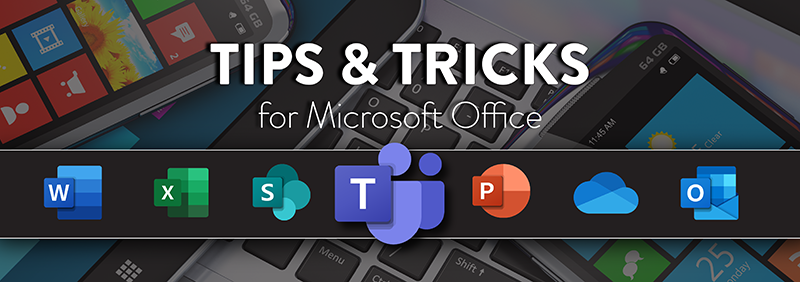Microsoft’s Teams development team is at it again! There are so many new features released in July that are sure to make your next Teams meeting a successful one.
Check out the new meeting features:
Search Function
Need an old recording but don’t know the date it was recorded or where to look? You can now search for recordings based on the meeting transcript in Microsoft Search. It’s a feature available to all users by default and makes it easier to find videos by what was said. Access this feature through the search bar in Teams.
Lock a Meeting
Have you ever been in the middle of a presentation, and someone enters the meeting late? Say goodbye to distractions. Now, organizers can lock their meetings to hinder subsequent attempts to join. Those who attempt to join a locked meeting from any device will be met with a message that the meeting is locked and they cannot join. This feature is under the More actions ellipsis in the Participant pane and is available only on the desktop version.
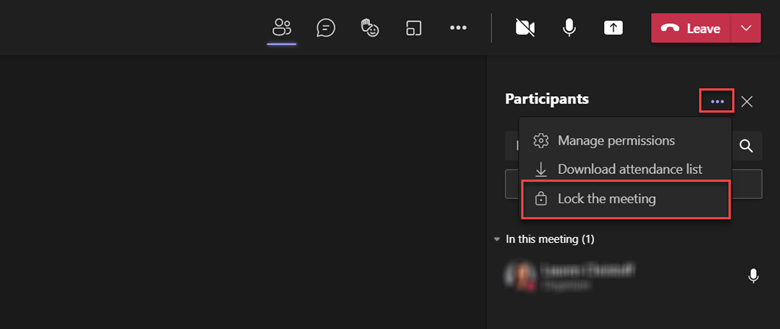
PowerPoint Live Slide Translation
Microsoft Teams PowerPoint Live makes your slides more inclusive with slide translate. You can now choose your language with a personalized view of a slide. Text can be translated into 19 supported languages with more to come. Select More options (…), then translate slides and click on a language preference.
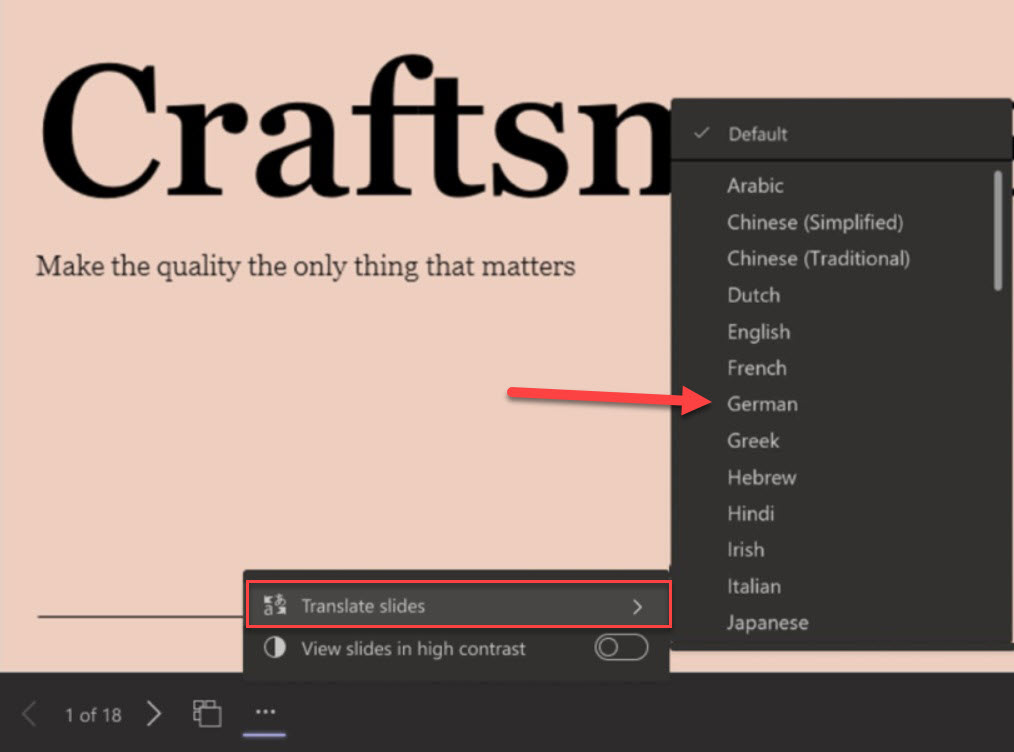
Auto Record
If you’re like me and always forget to hit the record button prior to the start of a meeting, you no longer need to worry. You can now set up a single meeting occurrence or series to auto-record by enabling the “record automatically” setting in the Meeting options (…). The meeting will automatically start recording the minute the first participant from the same organization joins. All recordings are saved to the initiator’s OneDrive or SharePoint. The desktop and mobile versions are the only platforms this feature is available for; it is not available to an A1 user.
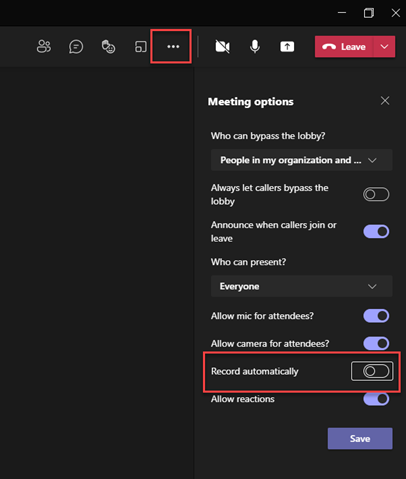
See More Participants
One feature in the works and is still in the rollout process is Large Gallery view in Teams. Microsoft is still making tweaks to this feature. The Large Gallery view is available when you have at least ten people with their cameras turned on. When more than 49 participants join a meeting, you’ll be able to see them all in a gallery with pages. Navigation controls < and > are shown at the bottom of the video gallery. You can use those controls (< or >) to view more video participants. The maximum number of videos you can see on the meeting stage depend on your device and internet bandwidth.
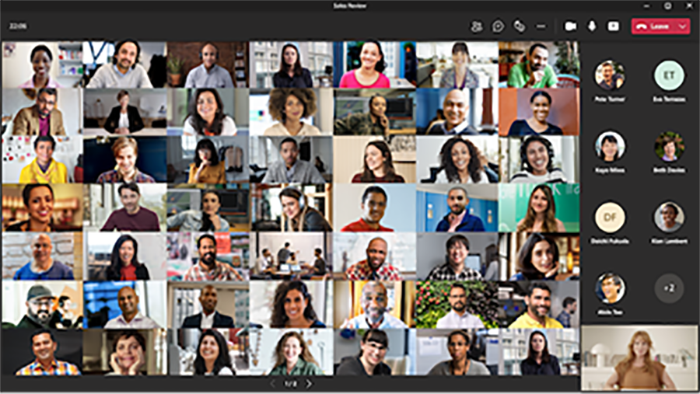
Company-Wide Backgrounds
Microsoft Teams made available the option to tailor your meetings backgrounds to your organization. This feature is available to Admins who can simply upload images (like your company logo) in the Microsoft Teams Admin Center under Meeting Policies. Once images are uploaded in the Admin Center, they can be available to all users within your tenant. You can add up to 50 images. Note: Company-wide backgrounds are temporarily available and will require an Advanced Communications license when it becomes available at the end of the year.
Note: Individual users can change the background of their video screen to either blur your background or replace it entirely with any image you want or select from images provided by Microsoft Teams.
To do this, make sure your video camera is turned on, then select Background Filters. On the right side of the screen options to Add new image, blur, or select from what Teams has provided. It’s that simple.
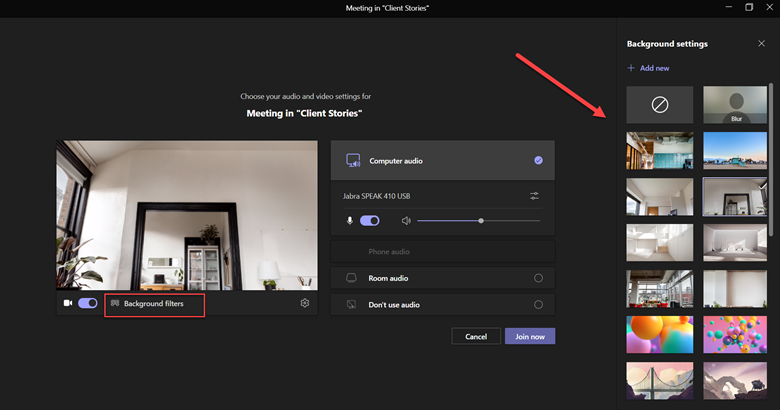
Real-Time Telemetry for Meetings
If you have ever lost your internet connection during a meeting, this tool will come in handy. You can now determine your Call Health in Teams during a meeting or a VOIP call. It helps end users identify any issues with audio, video, content sharing, or network related issues. The real-time metrics are automatically updated every 15 seconds, providing the ability to trace issues as they occur. You can access Call Health under More actions.

Once you select Call Health in the options menu, more information will appear to the right of the screen to help identify any issues.
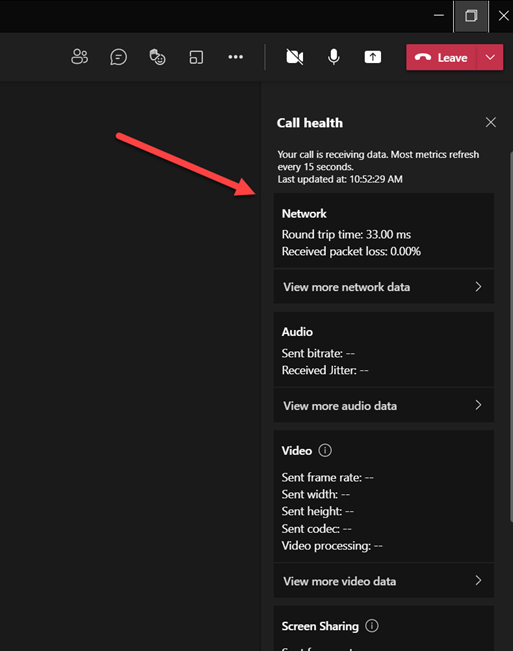
Mute PSTN Attendees in Meetings
Meeting organizers and presenters can now prevent Public Switched Telephone Network (PSTN) participants from unmuting during the meeting. For those who don’t know, PSTN is a telephone service that connects various residents and business through underground copper wires. This type of phone service is also called plain old telephone service (POTS), a landline, and fixed-line telephones. They can also enable certain attendees to unmute when they raise their hand. The PSTN attended can request to speak by raising their hand in a meeting by dial-pad command (press *5). This is helpful for press conference/classroom scenarios where you want to be in control of who has the mic.
I hope this overview of new features helps for a smooth Teams meeting. For more tips and tricks, visit and subscribe to our blog.
